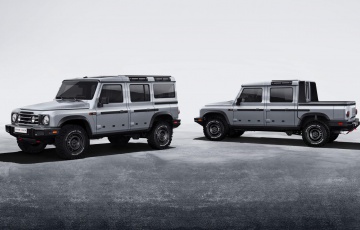The Future Is Here...

Singapore - On the weekend of March 16-10, 2017, the Shell Eco Marathon Asia competition took place at Changi Expo Grounds, against the backdrop of Shell’s ‘Make the Future’ efficiency and technology festival. More than 22,000 people attended the festival, which was free-to-access.
The Eco-Marathon Asia is part of a series of global events held by Shell, which includes the Eco-Marathon Americas and Eco-Marathon Europe. The competition, open to students from around the world, challenges them to create a vehicle that can go the furthest on a unit of energy (fuel). The cars are divided into two categories, Prototype (which are the most extreme) and UrbanConcept (more practical) and sub-divided by fuel type, including combustion engines, electric propulsion, or hydrogen.
This year saw increased participation from Singaporean teams, naturally, although sadly the stiff competition meant none of them saw the podium. The top three teams in each UrbanConcept category will go on to join the Drivers’ World Championship Asia, and the podium scorers for that event will join the global championship to compete against the winners from Americas and Europe in London, England, in May.
Also on site, visitors got a chance to hop into Shell’s most energy-efficient concept cars – the UrbanConcept and Prototype Car (with the ability to cover 100km and 150km respectively with just one litre's worth of fuel) - a glimpse into what-could-be the future of our transportation.
We delve into the National University of Singapore Electric Eco Team’s development process of its featherweight EV contender and speak to Amrit Mirchandani Changaroth (AMC), aged 26.
Amrit is the manager of the National University of Singapore’s squad (one of the nine local teams) at the eco-marathon – a team whose efforts went into developing an electric car that weighed only 77kg (with the use of carbonfibre) since last July.
TGS: What's the concept behind the electric car?
AMC: In line with the demands of the Shell Eco-Marathon, the NUS Electric Eco Team looked towards today’s real-world automotive developments for incorporation into our eco-marathon challenger, the E17. While hybridisation was a concept we believed in, cost and weight factors meant that we had to find a simpler solution.
As such, Battery-Electric was the obvious way forward for us, and the design ethos we had in mind was that of ‘lightness’. This was translated to lightness in every single area of the car and meant going into the little details of E17. For example, bolt lengths were optimised to be safe but not excessive: every gram counts. Another aspect was the extensive use of carbonfibre.
TGS: Why did you choose to make it the way you did?
AMC: The body shape was predominantly designed to be aerodynamically efficient. Looking from the top, it has the shape of a water droplet. This is similar to land speed record cars that run on salt flats. Although they can look cumbersome, it’s really a case of function over form.
To keep the vehicle weight down carbonfibre was used because of its high strength-to-weight ratio. This proved to be the correct decision at the technical inspection weigh in when we saw that our vehicle was a mere 77kg, 13kg lighter than the next lightest vehicle at that time.
Additionally, the drive of the vehicle was at a single-wheel. This not only minimised driveline losses but also kept the packaging simple and reduced the risk of complications. The suspension was also optimised for weight and strength using FEA (Finite Element Analysis) software.
TGS: As the race driver and as a team, how did you prepare for the competition?
AMC: We had seven months to prepare for the race, but it’s really a lot less time than it sounds. There was limited testing that was done on the vehicle. As such, preparation was only done on the Wednesday prior to the event when I could do track walks and assess the situation at the track.
Shell set-up a short test rack at the side of the main track and that served its purpose into getting to grips with the vehicle. Everything else was really adapting to the race situation when it was required.
TGS: What have you learnt?
AMC: Teamwork. That’s the most important factor in competitions such as this. Everyone needs to be able to work together to bring the best result. Other than that, there was a lot of engineering that was to be learnt through the entire process – how to design, manufacture and assemble parts in an efficient manner.

Left to Right: Yang Yuchen, 23, Wang Guoli, 24, Amrit Mirchandani Changaroth, 26, Zhao Longjie, 24, Truong Kim Son, 22, Nguyen Dang Khoa, 24







